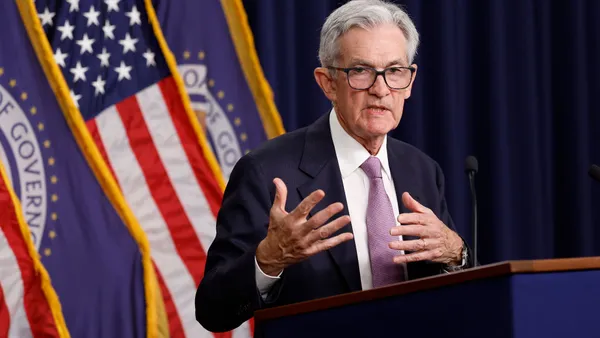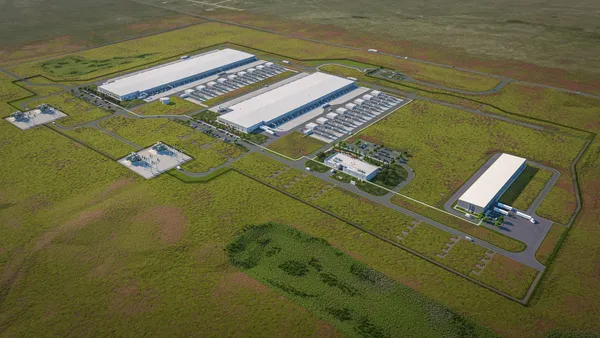Dive Brief:
- January construction spending, which totaled $1.26 trillion, remained essentially unchanged from December's upwardly revised figure, according to the U.S. Census Bureau. January 2018, however, saw a 3.2% increase in spending over January 2017.
- According to Reuters, the stagnant level of spending was unexpected and was a result of a negative 0.5% pullback in private spending that counterbalanced an increase of 1.8% in public spending, which was the highest level since August 2015. Nonresidential spending overall was down 0.1% from December but up 2.4% from a year ago, with the public sector (1.9% month over month; 8.2% year over year) outperforming the private (m/m -1.5%; y/y -1.1%).
- Economists polled by Reuters had anticipated a 0.3% overall increase in construction spending, and those polled by MarketWatch had expected a 0.4% increase. According to MarketWatch, some industry experts said bad weather at the beginning of January constrained spending, so there should be a rebound reflected in February's spending report, which is due out April 2. In addition, positive architects' billing data also indicates there will be an increase in private construction spending.
Dive Insight:
This spending report was quite different from last month's report, which marked the fifth straight month of spending increases. December spending beat analyst estimates on the backs of low interest rates, high employment and a post-natural disaster building boom. Public spending was down in last month's Census Bureau report as well.
The momentum that has pushed public construction forward, as well as other categories of construction, could be in jeopardy, according to the Associated General Contractors of America, from last week's announcement by the Trump administration – the implementation of steep tariffs on imports of steel (25%) and aluminum (10%).
These materials factor significantly into structures from high-rises to highways and bridges. That price burden, AGC officials said, in combination with otherwise increasing material prices, could be enough to potentially derail some construction projects, including those that are part of the president's proposed $1.5 trillion infrastructure program. Additionally, manufacturers that sell their products on the international market could now be a target of U.S. trade partners that respond in kind with tariffs of their own.
The White House hasn't released all the details yet, so favored trade partners that have not engaged in acts like dumping, could be eligible for waivers.













